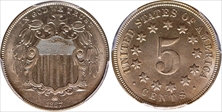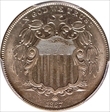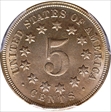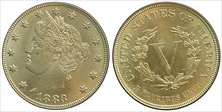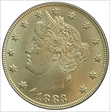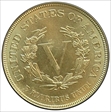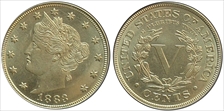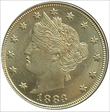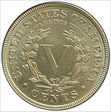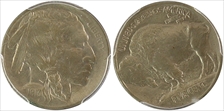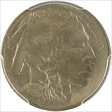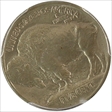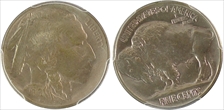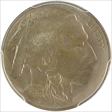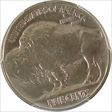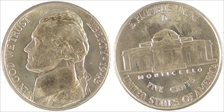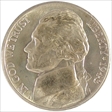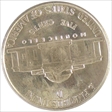The Good Collection 的钱币相册
1866 Liberty Shield Nickel (with Rays) MS65 { PCGS-5 } { CAC } (Aug’2020). This nicely struck nickel features the first-year design including rays about the shield presenting an over-crowded design fraught with production issues.
1867 Shield Nickel (No Rays) { PCGS-4 } (Aug'2020). In the second year of this series, the "rays" are removed simplifying the design and enhancing the overall eye appeal. Nice uniform nickel toning covers the piece and the strike is solid giving good detail for all of the lines in the shield.
1867 Shield Nickel (No Rays) { PCGS-4 } (Aug'2020). In the second year of this series, the "rays" are removed simplifying the design and enhancing the overall eye appeal. Nice uniform nickel toning covers the piece and the strike is solid giving good detail for all of the lines in the shield.
1867 Shield Nickel (No Rays) { PCGS-4 } (Aug'2020). In the second year of this series, the "rays" are removed simplifying the design and enhancing the overall eye appeal. Nice uniform nickel toning covers the piece and the strike is solid giving good detail for all of the lines in the shield.
1883 Liberty Head Nickel No CENTS MS65 { PCGS-2 } (Mar'2009) Nice luster on this OGH gem compliments a strike which is solid on this first-year issue original variety sans "CENTS". Some unscrupulous entrepreneurs took to gold-plating these coins and then using them to buy a couple cents worth of merchandise, hoping to get nearly $5 in change. This was the only US coin to be minted without a denomination, a situation which was quickly remedied.
1883 Liberty Head Nickel No CENTS MS65 { PCGS-2 } (Mar'2009) Nice luster on this OGH gem compliments a strike which is solid on this first-year issue original variety sans "CENTS". Some unscrupulous entrepreneurs took to gold-plating these coins and then using them to buy a couple cents worth of merchandise, hoping to get nearly $5 in change. This was the only US coin to be minted without a denomination, a situation which was quickly remedied.
1883 Liberty Head Nickel No CENTS MS65 { PCGS-2 } (Mar'2009) Nice luster on this OGH gem compliments a strike which is solid on this first-year issue original variety sans "CENTS". Some unscrupulous entrepreneurs took to gold-plating these coins and then using them to buy a couple cents worth of merchandise, hoping to get nearly $5 in change. This was the only US coin to be minted without a denomination, a situation which was quickly remedied.
1883 Liberty Head Nickel With CENTS MS64 { PCGS-3 } (Feb'2009) This first year design modification has nice luster, no serious marks, and a die-break through the upper stars on the obverse. "CENTS" was added when con-men gold plated the No Cents variety with gold and tried to pass them off as half eagles.
1883 Liberty Head Nickel With CENTS MS64 { PCGS-3 } (Feb'2009) This first year design modification has nice luster, no serious marks, and a die-break through the upper stars on the obverse. "CENTS" was added when con-men gold plated the No Cents variety with gold and tried to pass them off as half eagles.
1883 Liberty Head Nickel With CENTS MS64 { PCGS-3 } (Feb'2009) This first year design modification has nice luster, no serious marks, and a die-break through the upper stars on the obverse. "CENTS" was added when con-men gold plated the No Cents variety with gold and tried to pass them off as half eagles.
1913 Buffalo Nickel Type 1 MS64 { PCGS-4 } (Apr'2013) A solid strike has good details on both sides, a full horn and clear definition of the buffalo's tail. This variety, with the buffalo standing on the mound was the initial design, found to be lacking in that the denomination as feared to be the first thing to wear off, and so the second variety was introduced this same year to provide it better protection. This is the most common of the two varieties (from all mints). The reverse also has a thirty degree die rotation.
1913 Buffalo Nickel Type 1 MS64 { PCGS-4 } (Apr'2013) A solid strike has good details on both sides, a full horn and clear definition of the buffalo's tail. This variety, with the buffalo standing on the mound was the initial design, found to be lacking in that the denomination as feared to be the first thing to wear off, and so the second variety was introduced this same year to provide it better protection. This is the most common of the two varieties (from all mints). The reverse also has a thirty degree die rotation.
1913 Buffalo Nickel Type 1 MS64 { PCGS-4 } (Apr'2013) A solid strike has good details on both sides, a full horn and clear definition of the buffalo's tail. This variety, with the buffalo standing on the mound was the initial design, found to be lacking in that the denomination as feared to be the first thing to wear off, and so the second variety was introduced this same year to provide it better protection. This is the most common of the two varieties (from all mints). The reverse also has a thirty degree die rotation.
1913 Buffalo Nickel Type 2 MS64 { PCGS-4 } (Apr'2013) There are some attractive underlying toning visible on both sides, including rose, gold, cobalt blue and emerald green. There is also considerable luster from the reverse, which is also rotated about twenty degrees. The design change occurred later in the year, making this the rarer of the the two types from all three mints.
1913 Buffalo Nickel Type 2 MS64 { PCGS-4 } (Apr'2013) There are some attractive underlying toning visible on both sides, including rose, gold, cobalt blue and emerald green. There is also considerable luster from the reverse, which is also rotated about twenty degrees. The design change occurred later in the year, making this the rarer of the the two types from all three mints.
1913 Buffalo Nickel Type 2 MS64 { PCGS-4 } (Apr'2013) There are some attractive underlying toning visible on both sides, including rose, gold, cobalt blue and emerald green. There is also considerable luster from the reverse, which is also rotated about twenty degrees. The design change occurred later in the year, making this the rarer of the the two types from all three mints.
eBay Auction (March 2009): Nicely struck proof with subtle hues of lilac, cobalt-blue and straw-yellow in the fields. This variety has the faintly rendered steps on Montecello.
eBay Auction (March 2009): Nicely struck proof with subtle hues of lilac, cobalt-blue and straw-yellow in the fields. This variety has the faintly rendered steps on Montecello.
1943-D Jefferson Nickel MS66FS { PCGS-3 } (Apr'2013) Beautiful lustrous gunmetal gray surfaces are augmented by the subtle underlying pastel colors of cobalt blue, lilac, gold, rose and fuchsia. This wartime gem features the large "D" over the dome and the steps of Monticello are each clearly delineated. In the face of rationing and support for the war effort, nickel and copper were too precious to waste on making money, so a longtime favorite silver, not used in this denomination since the half-dime, was again pressed into service.
1943-D Jefferson Nickel MS66FS { PCGS-3 } (Apr'2013) Beautiful lustrous gunmetal gray surfaces are augmented by the subtle underlying pastel colors of cobalt blue, lilac, gold, rose and fuchsia. This wartime gem features the large "D" over the dome and the steps of Monticello are each clearly delineated. In the face of rationing and support for the war effort, nickel and copper were too precious to waste on making money, so a longtime favorite silver, not used in this denomination since the half-dime, was again pressed into service.
1943-D Jefferson Nickel MS66FS { PCGS-3 } (Apr'2013) Beautiful lustrous gunmetal gray surfaces are augmented by the subtle underlying pastel colors of cobalt blue, lilac, gold, rose and fuchsia. This wartime gem features the large "D" over the dome and the steps of Monticello are each clearly delineated. In the face of rationing and support for the war effort, nickel and copper were too precious to waste on making money, so a longtime favorite silver, not used in this denomination since the half-dime, was again pressed into service.
eBay Auction (March 2009): Very highly frosted devices, multiply reflective mirrors.
eBay Auction (March 2009): Very highly frosted devices, multiply reflective mirrors.
2006-S Jefferson Nickel "Return to Monticello" PR69DCAM { PCGS-3 } (Feb'2007) An interesting front profile of our third president is shown on the nickel, and the reverse resumes with his home Monticello after a two year hiatus. The mirrors are nearly flawless.
2006-S Jefferson Nickel "Return to Monticello" PR69DCAM { PCGS-3 } (Feb'2007) An interesting front profile of our third president is shown on the nickel, and the reverse resumes with his home Monticello after a two year hiatus. The mirrors are nearly flawless.
2006-S Jefferson Nickel "Return to Monticello" PR69DCAM { PCGS-3 } (Feb'2007) An interesting front profile of our third president is shown on the nickel, and the reverse resumes with his home Monticello after a two year hiatus. The mirrors are nearly flawless.





















